#american aircraft carriers
Explore tagged Tumblr posts
Text
A Jewish American soldier built a Sukkah on an American aircraft carrier 😂❤️🇮🇱
82 notes
·
View notes
Text

Mustang and Corsair
@ron_eisele via X
#p 51 mustang#north american aviation#fighter#usaaf#Corsair mk.IV#chance vought#fighter bomber#faa#royal navy#royal navy aircraft#aircraft#aviation#carrier aviation#ww2
37 notes
·
View notes
Text
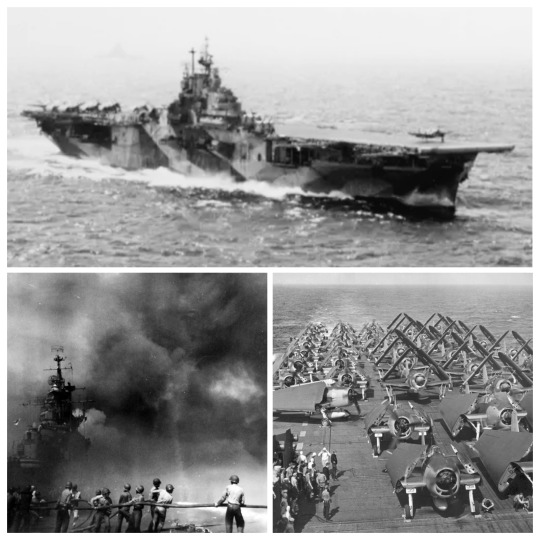
• USS Intrepid
USS Intrepid (CV/CVA/CVS-11), also known as The Fighting "I", is one of 24 Essex-class aircraft carriers built during World War II for the United States Navy. She is the fourth US Navy ship to bear the name. Commissioned in August 1943, Intrepid participated in several campaigns in the Pacific Theater of Operations. Because of her prominent role in battle, she was nicknamed "the Fighting I", while her frequent bad luck and time spent in dry dock for repairs—she was torpedoed once and hit in separate attacks by four Japanese kamikaze aircraft—earned her the nicknames "Decrepit" and "the Dry I".
The keel for Intrepid was laid down on December 1st, 1941 in Shipway 10 at the Newport News Shipbuilding & Dry Dock Co., Newport News, Virginia, days before the Japanese attack on Pearl Harbor and the United States' entrance into World War II. She was launched on April 26th, 1943, the fifth Essex-class aircraft carrier to be launched. She was sponsored by the wife of Vice Admiral John H. Hoover. In August 1943, she was commissioned with Captain Thomas L. Sprague in command before heading to the Caribbean for shakedown and training. She thereafter returned to Norfolk, before departing once more on December 3rd, bound for San Francisco. She proceeded on to Pearl Harbor, Hawaii, arriving there on 10 January, where she began preparations to join the rest of the Pacific Fleet for offensive operations against the Imperial Japanese Navy.
Intrepid joined the Fast Carrier Task Force, then Task Force 58 (TF 58), for the next operation in the island-hopping campaign across the Central Pacific: the Gilbert and Marshall Islands campaign. On January 16th, 1944, Intrepid, her sister ship Essex, and the light carrier Cabot left Pearl Harbor to conduct a raid on islands in the Kwajalein Atoll from January 29th to February 2nd. The three carriers' air group destroyed all 83 Japanese aircraft stationed on Roi-Namur in the first two days of the strikes, before Marines went ashore on neighboring islands on January 31st, in the Battle of Kwajalein. That morning, aircraft from Intrepid attacked Japanese beach defenses on Ennuebing Island until ten minutes before the first Marines landed. The Marines quickly took the island and used it as a fire base to support the follow-on attack on Roi. After the fighting in the Kwajalein Atoll finished, on February 3rd, Intrepid and the rest of TF 58 proceeded to launch Operation Hailstone, a major raid on the main Japanese naval base in the Central Pacific, Truk Lagoon. From the 17th to 19th of February, the carriers pounded Japanese forces in the lagoon, sinking two destroyers and some 200,000 GRT (gross register tonnage) of merchant ships.
The strikes demonstrated the vulnerability of Truk, which convinced the Japanese to avoid using it in the future. Intrepid did not emerge from the operation unscathed, however; on the night of 17th–18th of February, a Rikko type Torpedo Bomber from the 755th Kōkūtai (Genzan Air Group) flying from Tainan attacked and torpedoed the carrier near her stern. The torpedo struck 15 ft (5 m) below the waterline, jamming the ship's rudder to port and flooding several compartments. Sprague was able to counteract the jammed rudder for two days by running the port side screw at high speed while idling the starboard screw, until high winds overpowered the improvised steering. The crew then jury-rigged a sail out of scrap canvas and hatch covers, which allowed the ship to return to Pearl Harbor, where she arrived on February 24th. Temporary repairs were effected there, after which Intrepid steamed on March 16th, escorted by the destroyer USS Remey, to Hunters Point Naval Shipyard in San Francisco for permanent repairs, arriving there six days later. The work was completed by June, and Intrepid began two months of training around Pearl Harbor. Starting in early September, Intrepid joined operations in the western Caroline Islands; the Fast Carrier Task Force was now part of the Third Fleet under Admiral William Halsey Jr., and had been renamed Task Force 38. On September 6th and 7th, she conducted air strikes on Japanese artillery batteries and airfields on the island of Peleliu, in preparation for the invasion of Peleliu. On the 9th and 10th of September, she and the rest of the fleet moved on to attack airfields on the island of Mindanao in the Philippines, followed by further strikes on bases in the Visayan Sea between the 12th and 14th of September. On September 17th, Intrepid returned to Pelelieu to provide air support to the Marines that had landed on the island two days before.
Intrepid and the other carriers then returned to the Philippines to prepare for the Philippines campaign. At this time, Intrepid was assigned to Task Group 38.2. In addition to targets in the Philippines themselves, the carriers also struck Japanese airfields on the islands of Formosa and Okinawa to degrade Japanese air power in the region. On October 20th, at the start of the Battle of Leyte, Intrepid launched strikes to support Allied forces as they went ashore on the island of Leyte. By this time Halsey had reduced the carriers of TG 38.2, commanded by Rear Admiral Gerald F. Bogan aboard Intrepid, to just Intrepid, Cabot, and the light carrier Independence. Between the 23rd and 26th of October, the Japanese Navy launched a major operation to disrupt the Allied landings in the Philippines, resulting in the Battle of Leyte Gulf. On the morning of October 24th, a reconnaissance aircraft from Intrepid spotted Vice Admiral Takeo Kurita's flagship, Yamato. Two hours later, Intrepid and Cabot launched a strike on Kurita's Center Force, initiating the Battle of the Sibuyan Sea; this included eight Curtiss SB2C Helldiver dive bombers from Intrepid. One 500-pound (230 kg) bomb struck the roof of Turret No. 1, failing to penetrate. Two minutes later, the battleship Musashi was struck starboard amidships by a torpedo from a Grumman TBF Avenger, also from Intrepid. The Japanese shot down two Avengers. Another eight Helldivers from Intrepid attacked Musashi again at around noon, scoring two more hits, with two Helldivers shot down. Further strikes from Essex and Lexington inflicted several more bomb and torpedo hits, 37 aircraft from Intrepid, the fleet carrier Franklin, and Cabot attacked Musashi, hitting her with 13 bombs and 11 torpedoes for the loss of three Avengers and three Helldivers. In addition to the loss of Musashi, many of Kurita's other ships, including battleships Yamato, Nagato and Haruna, and heavy cruiser Myōkō were damaged in the attacks, forcing him to break off the operation temporarily. After Kurita's force began to withdraw, Halsey ordered TF 38 to steam north to intercept the aircraft carriers of the Northern Force, commanded by Vice Admiral Jisaburō Ozawa. Bogan correctly perceived that Ozawa's force was intended to lure TF 38 away from the landing area to allow Kurita to attack it, but Halsey overruled him and several other Task Group commanders who voiced similar concerns. Early on October 25th, aircraft from Intrepid and the other carriers launched a strike on the Japanese carriers. Aircraft from Intrepid scored hits on the carrier Zuihō and possibly the carrier Zuikaku. Further strikes throughout the morning resulted in the sinking of four Japanese aircraft carriers and a destroyer in the Battle off Cape Engaño. Halsey's preoccupation with the Northern Force allowed Kurita the respite he needed to turn his force back to the east, push through the San Bernardino Strait, where it engaged the light forces of escort carriers, destroyers, and destroyer escorts that were directly covering the landing force in the Battle off Samar. Kurita nevertheless failed to break through the American formation, and ultimately broke off the attack.
On October 27th, TG 38.2 returned to operations over Luzon; these included a raid on Manila on the 29th. That day, a kamikaze suicide aircraft hit Intrepid on one of her port side gun positions; ten men were killed and another six were wounded, but damage was minimal. A Japanese air raid on November 25th, struck the fleet shortly after noon. Two kamikazes crashed into Intrepid, killing sixty-nine men and causing a serious fire. The ship remained on station, however, and the fires were extinguished within two hours. She was detached for repairs the following day, and reached San Francisco by December. In the middle of February 1945, back in fighting trim, the carrier steamed for Ulithi, arriving by March. She set off westward for strikes on Japan on March 14th, and four days later launched strikes against airfields on Kyūshū. That morning a twin-engined Japanese G4M "Betty" kamikaze broke through a curtain of defensive fire, turned toward Intrepid, and exploded 50 ft (15 m) off Intrepid's forward boat crane. A shower of flaming gasoline and aircraft parts started fires on the hangar deck, but damage control teams quickly put them out. Intrepid's aircraft joined attacks on remnants of the Japanese fleet anchored at Kure damaging 18 enemy naval vessels, including battleship Yamato and carrier Amagi. The carriers turned to Okinawa as L-Day, the start of the most ambitious amphibious assault of the Pacific war, approached. The invasion began on the 1st of April. Intrepid aircraft flew support missions against targets on Okinawa and made neutralizing raids against Japanese airfields in range of the island. On April 16th, during an air raid, a Japanese aircraft dived into Intrepid's flight deck; the engine and part of the fuselage penetrated the deck, killing eight men and wounding 21. In less than an hour the flaming gasoline had been extinguished; three hours after the crash, aircraft were again landing on the carrier. On April 17th, Intrepid retired homeward via Ulithi. She made a stop at Pearl Harbor on 11 May, arriving at San Francisco for repairs on May 19th. On June 29th, the carrier left San Francisco. On August 6th, her aircraft launched strikes against Japanese on bypassed Wake Island. Intrepid arrived at Eniwetok on the next day. On August 15th, when the Japanese surrendered, she received word to "cease offensive operations." Intrepid got under way on August 21st to support the occupation of Japan.
In February 1946, Intrepid moved to San Francisco Bay. The carrier was reduced in status to "commission in reserve" in August, and she was decommissioned on March 22nd, 1947. After her decommissioning, Intrepid became part of the Pacific Reserve Fleet. On February 9th, 1952, she was recommissioned. Intrepid later severed as an attack carrier (CVA), and then eventually became an antisubmarine carrier (CVS). In her second career, she served mainly in the Atlantic, but also participated in the Vietnam War. She was the recovery ship for a Mercury and a Gemini space mission. She was decommissioned for the second time in 1974, she was put into service as a museum ship in 1982 as the foundation of the Intrepid Sea, Air & Space Museum Complex in New York City. Intrepid earned five battle stars and the Presidential Unit Citation during World War II, and a further three battle stars for Vietnam service.
#second world war#world war 2#world war ii#wwii#military history#american history#naval history#naval warfare#aircraft carrier#intrepid museum#pacific campaign#pearl harbor#us navy
27 notes
·
View notes
Text

An insane paragraph from a Telegraph article on the traumatising loss of the Chagos Islands from the glorious empire, specifically the fact that their departure means that, due to its location on the globe, "the sun will finally set on the British Empire".
About fucking time.
Also, Diego Garcia will still be under British-American control so the west can bomb the shit out of anything within flying range of B-2/B-52. There's also apparently a Space Force detachment there for reasons involving satellite tracking.

And some Seabees are there, so that's nice for them.

#chagos islands#western imperialism#unsinkable aircraft carrier#diego garcia#british imperialism#american imperialism
8 notes
·
View notes
Text

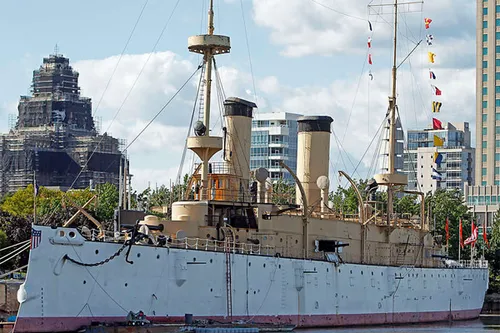

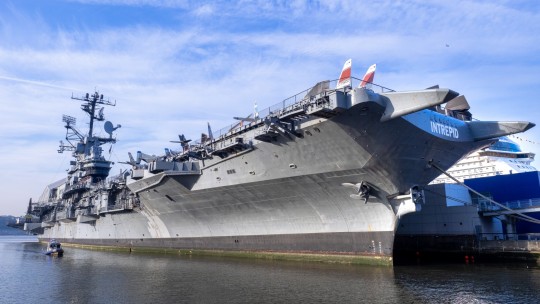
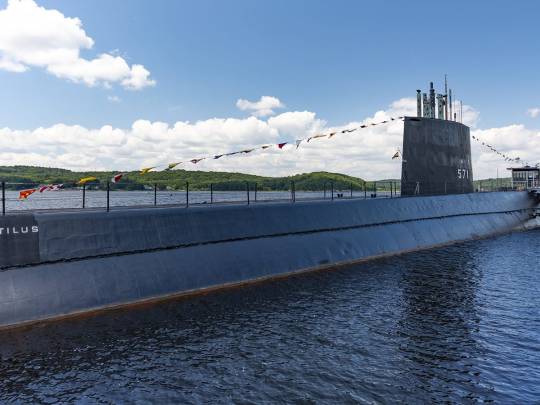
🇺🇲 Happy 248th Birthday to the United States Navy - Semper Fortis ⚓.
#us navy#happy birthday#uss constitution#uss intrepid#american revolution#spanish american war#world war 2#cold war#battleship#aircraft carrier#nuclear submarine
27 notes
·
View notes
Text
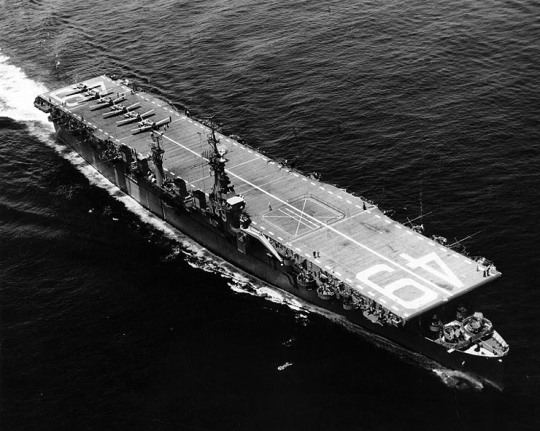
USS Wright (CVL-49) operating on training duty, with six North American SNJ Texans on deck lined up for takeoff.
The photo's original caption reads "The stage is set for the final scene of Basic Training: the flight students will qualify six carrier landings in SNJ 'Texans' and the curtain will descend on the graduation finale."
Date: circa 1948-1952
Naval History and Heritage Command: NH 97618
#USS Wright (CVL-49)#USS Wright#Saipan Class#Aircraft Carrier#Carrier#Warship#Ship#United States Navy#U.S. Navy#US Navy#USN#Navy#North American SNJ Texan#SNJ#training aircraft#Atlantic Ocean#1940s#1950s#undated#my post
24 notes
·
View notes
Text

The Launching of the Light Carrier USS Cabot, April 4th, 1943, Camden, New Jersey, United States.
55 notes
·
View notes
Video
youtube
Revell - American Aircraft Carrier - USS Hornet - 1/1200 - Model Building Video
#youtube#Revell#American Aircraft Carrier#USS Hornet#Model Ship#Aircraft Carrier#World War 2#WW2#World War II#WWII#Revell Model#Revell USS Hornet#Model Building#Original Content
2 notes
·
View notes
Text
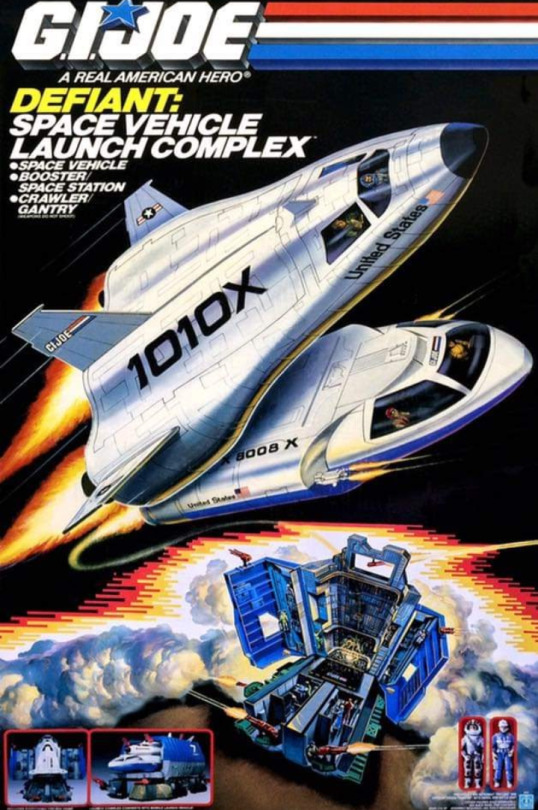
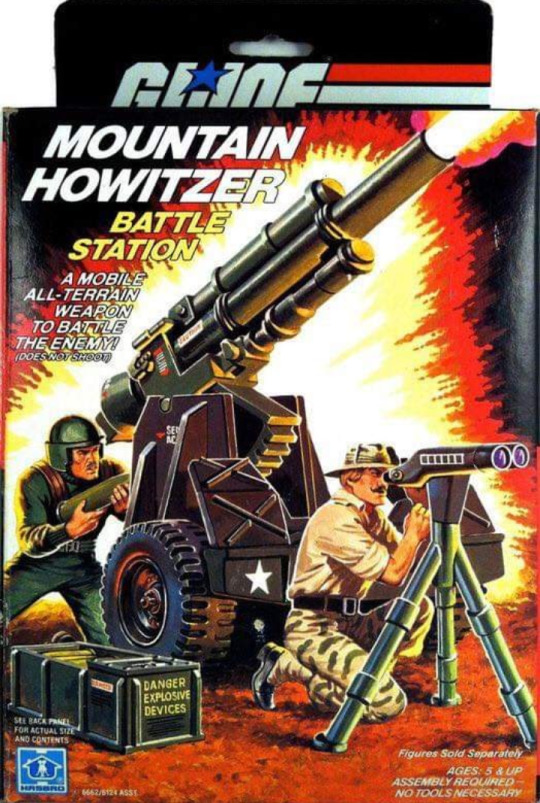


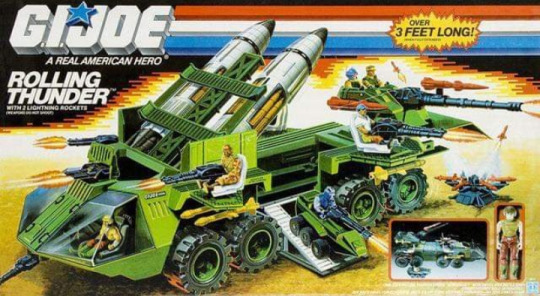


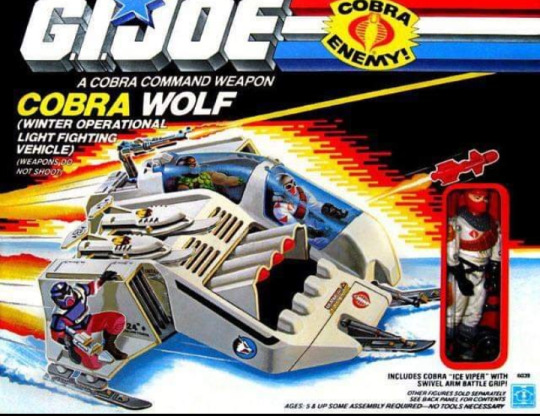
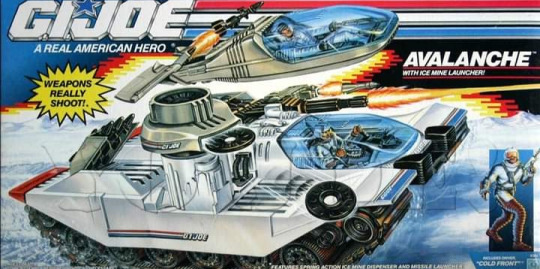

#adult collectibles#adult collectors#toys#collectables#action figures#figures#hasbro#gijoes#gijoe#a real american hero#arah#cobra enemy#vehicles#playsets#u.s.s. flagg aircraft carrier#avalanche & cold front#cobra wolf & ice viper#sky sharc#cobra h.i.s.s. & cobra h.i.s.s. driver#rolling thunder#general & major storm#mobile strike headquarters and launch pad#gijoe headquarters#mountain howitzer battle station#box set#sky patrol#defiant space vehicle launch complex#crawler & gentry#yojoe.com#gijoe collectors
7 notes
·
View notes
Text
I'm going to interrupt my normal posting schedule briefly to discuss naming airplanes. Don't worry, I'll post the regularly scheduled Friday review after this, but first I'm going to talk about naming airplanes.
When I say that I don't mean naming types of airplanes. I mean giving the airplanes names. A lot of airlines do it. Back in the day you had your Clipper This, Flagship That, Star of the Whatsit, so on. Lots of airlines name theirs after places. Aer Lingus names theirs after Irish saints. SAS names their Vikings. FedEx Express gives theirs human names, like Gabriel, Richard, JobEdokat, and Meredith.
The year is 2023 at time of writing. Clipper This, Flagship That, and Star of the Whatsit are now all relics of a distant past where a plane ticket cost more than some cars and airports sold life insurance at kiosks. That age is long past. Delta, United, American...all cowards, their airplanes long unnamed. Though the practice is alive and well elsewhere, for some reason it has largely gone dormant in the United States. There are few exceptions, but there are exceptions, and there is one in particular which stands out from the rest. Just one carrier on a mission and their 289 individually named flying machines.
I would like to present you with a curated selection of things which jetBlue has named their airplanes. There are many more - 289, to be specific. Take a look through them all if you care to. But this is a list of my favorites. Just a bit of appreciation for a true titan of aircraft-naming in an era where the art seems all but lost.
Roses Are Red, This Plane is Blue (N3104J)
Aruba, Jamaica, Blue I Wanna Take Ya (N2016J)
Blue's That Girl? (N997JL)
Don't Hate Me 'Cause I'm Bluetiful (N996JL)
Don't Mind If I Blue (N971JL)
Blue Kid On The Block (N913JB)
1. Fly JetBlue 2. Repeat Step 1 (N807JB)
Shantay, Blue Stay (N794JB)
#Follow @JetBlue (N334JB)
Enough about me...let's talk about blue (N712JB)
Big blue people seater (N705JB)
Bippity, Boppity, Blue (N565JB)
Blue-yah! (N187JB)
Badda Bing Badda Blue (N534JB)
FuhgeddaBlueDit (N3113J)
Boogie Woogie Bluegle Boy (N3062J)
My Other Ride is a JetBlue A320 (N329JB, an Embraer E190)
My Other Ride is a JetBlue E190 (N793JB, an Airbus A320)
And, my personal favorite:
How's My Flying? Call 1-800-JETBLUE (N715JB)
(Although if you can read that, you're probably too close. Incidentally, 'If You Can Read This, You're Blue Close' is an A320-200 with the registration N729JB.)
8K notes
·
View notes
Text
2023: It's About To Get REAL...
2023: It’s About To Get REAL…
When I posted my first blog article on August 1, 2014, I had no idea that one day, over 26,000 followers from over 120 countries would be following what I wrote. I had no idea that I would have such a huge amount of ideas to write about, ,and I had no idea the pressure I would put on myself to always post something that was perfectly written and edited. But now, 8+ years later, I totally get…

View On WordPress
#aircraft carriers#American businesses#Antichrist#articles#astronauts#Barack Obama#Chernobyl#China#climate fraud#climate hoax#Coca Cola#conspiracies#controversy#draft#fake news#Francis#Hugo Boss#IBM and the Holocaust#Jewish slave labour#mosque shootings#NASA#Nazi Germany#New Year&039;s resolutions#pagan Christianity#Pope Benedict#posting schedule#preparing for war#private#sea levels rising#space shuttle
0 notes
Text

It’s been 70 years since the FJ-4 Fury first took flight in 1954.
A fascinating part of this model’s history is that the Navy ordered six FJ-4s to test rocket engines, designated FJ-4F. This variant was capable of reaching Mach 1.41 and an altitude of 71,000 feet.
📷 Phil High
@EAA via X
#fj 2 fury#north american aviation#fighter#aircraft#navy#aviation#us navy#carrier aviation#cold war aircraft
42 notes
·
View notes
Text
THE REGIONAL WAR in the Middle East now involves at least 16 different countries and includes the first strikes from Iranian territory on Israel, but the United States continues to insist that there is no broader war, hiding the extent of American military involvement. And yet in response to Iran’s drone and missile attacks Saturday, the U.S. flew aircraft and launched air defense missiles from at least eight countries, while Iran and its proxies fired weapons from Iraq, Syria, and Yemen.
[...]
While the world has been focused on — and the Pentagon has been stressing — the comings and goings of aircraft carriers and fighter jets to serve as a “deterrent” against Iran, the U.S. has quietly built a network of air defenses to fight its regional war. “At my direction, to support the defense of Israel, the U.S. military moved aircraft and ballistic missile defense destroyers to the region over the course of the past week,” President Joe Biden said in a statement Saturday. “Thanks to these deployments and the extraordinary skill of our servicemembers, we helped Israel take down nearly all of the incoming drones and missiles.” As part of that network, Army long-range Patriot and Terminal High Altitude Area Defense surface-to-air missile batteries have been deployed in Iraq, Kuwait, the United Arab Emirates, Qatar, Saudi Arabia, Jordan, and at the secretive Site 512 base in Israel. These assets — plus American aircraft based in Kuwait, Jordan, the UAE, Qatar, and Saudi Arabia — are knitted together in order to communicate and cooperate with each other to provide a dome over Israel (and its own regional bases). The United Kingdom is also intimately tied into the regional war network, while additional countries such as Bahrain have purchased Patriot missiles to be part of the network. Despite this unambiguous regional network, and even after Israel’s attack on Iran’s embassy in Syria earlier this month, the Biden administration has consistently denied that the Hamas war has spread beyond Gaza. It is a policy stance — and a deception — that has held since Hamas’s October 7 attack. “The Middle East region is quieter than it has been in two decades,” Biden’s national security adviser Jake Sullivan said in an ill-timed remark eight days before October 7. “We don’t see this conflict widening as it still remains contained to Gaza,” deputy Pentagon press secretary Sabrina Singh said the day after three U.S. troops were killed by a kamikaze drone launched by an Iran-backed militia at a U.S. base in Jordan. Since then (and even before this weekend), the fighting has spread to Iraq, Syria, Jordan, and Yemen.
1K notes
·
View notes
Text


The Houthis have far more expensive missiles and drones, theyre not going to use them just yet because they have a strategy in place. They launch cheap drones at either US aircraft carriers or other ships at sea knowing that the US will be forced to use missiles worth millions just to stop one drone or cheap rocket.
Here's the thing about the American warships in the Gulf right now, they can't be reloaded at sea. Once they've run out of missiles, they will have to find a port, preferably one in an allied country, to get loaded again which can take weeks. There's a reason why the Houthis are not worried despite all the threats being sent towards them. The US Navy is in terrible shape and can no longer act as a deterrent.
#yemen#jerusalem#tel aviv#current events#palestine#free palestine#gaza#free gaza#news on gaza#palestine news#news update#war news#war on gaza#naval warfare
2K notes
·
View notes
Text
President Joe Biden is weighing more US defenses in the Middle East as the US prepares for an Iranian retaliation against Israel that officials say could include an attack on American forces.
In a phone call with Israeli Prime Minister Benjamin Netanyahu Thursday, Biden said the US would “support Israel’s defense against threats,” which would include “new defensive US military deployments,” according to a readout of the call.[...]
The USS Theodore Roosevelt carrier strike group, which includes the aircraft carrier, destroyers and other warships, has been operating in the Gulf of Oman in recent weeks. The strike group could potentially move into the Gulf of Aden or the Red Sea, where Navy warships have intercepted dozens of Houthi launches over the past several months.
The USS Wasp amphibious assault ship and several other Navy vessels are currently operating in the Mediterranean Sea. The group includes a Marine expeditionary unit capable of carrying out an evacuation of American citizens from Lebanon if the US ordered such an evacuation.
Iran’s Islamic Revolutionary Guard Corps (IRGC) promised a “harsh” and “painful” response to the assassination. Israel has not commented on the killing.[...]
Israel Defense Forces spokesman Rear Adm. Daniel Hagari said that “international partners” have bolstered their forces in the region, though he did not specify which countries.
“We have very good defense systems,” he said of Israel’s own preparations for an attack, “and in addition we have international partners who have reinforced their forces [deployed] in the region, to help us counter the threats.”
A Defense Department spokesman said Thursday the Pentagon has no information to provide on the movement of US forces or changes to force condition at this time.[...]
A coalition of countries, including Jordan and other Arab states, came together in April to share intelligence and intercept the Iranian barrage. But officials say it’s unclear if such a coalition could be stood up again so quickly and whether all of the countries are willing to participate once again.
Hezbollah leader Hassan Nasrallah hinted that a coordinated attack on Israel could be in the works after Israel assassinated one of its top commanders in Beirut less than 24 hours before the killing of Haniyeh.
“Because they have picked a fight with everyone, they don’t know where the response will come from … the response will come separately or coordinated,” he said in a speech Thursday.
1 Aug 24
108 notes
·
View notes
Text
National Hero Day

At the start of World War II, the U.S. Navy restricted Black sailors to its “messman” branch. But the extraordinary heroism of Messman Doris “Dorie” Miller, who manned an anti-aircraft gun during Japan’s December 7, 1941, attack on Pearl Harbor, helped initiate change. Publicity by the NAACP and the Black press about Miller’s exploits helped convince FDR to award him the Navy Cross—the first ever given to a Black sailor. In April 1942, the Navy announced that Black recruits would be trained in a range of specialties beyond messmen—including combat positions.
Miller became an iconic emblem of the fight for Black civil rights and his likeness was reproduced on buttons, wartime commemorative items, and prints like this one: https://fdr.artifacts.archives.gov/.../black-americans...
In November 1943, he was killed in action while serving aboard the escort carrier Liscome Bay when it was sunk by a Japanese submarine.
The print is currently on display in the FDR Library's special exhibition, BLACK AMERICANS, CIVIL RIGHTS, AND THE ROOSEVELTS, 1932-1962: https://www.fdrlibrary.org/civil-rights-special-exhibit

97 notes
·
View notes